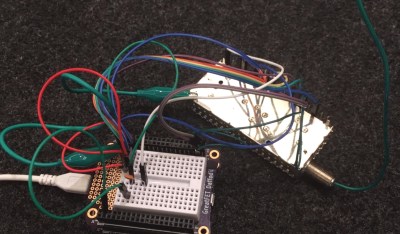There were plenty of great talks at this year’s Supercon, but we really liked the title of Dominic Spill’s talk: Ridiculous Radios. Let’s face it, it is one thing to make a radio or a computer or a drone the way you are supposed to. It is another thing altogether to make one out of things you shouldn’t be using. That’s [Dominic’s] approach. In a quick 30 minutes, he shows you two receivers and two transmitters. What makes them ridiculous? Consider one of the receivers. It is a software designed radio (SDR). How many bits should an SDR have? How about one bit? Ridiculous? Then you are getting the idea.
Dominic is pretty adept at taking a normal microcontroller and bending it to do strange RF things and the results are really entertaining. The breadboard SDR, for example, is a microcontroller with three components: an antenna, a diode, and a resistor. That’s it. If you missed the talk at Supercon, you can see the newly published video below, along with more highlights from Dominic’s talk.
Is It Microcontroller Abuse?
Of course, he’s leveraging the analog conversion in the microcontroller as well as the ability to generate signals in software. You might think that’s going to be an anemic receiver. Granted, it won’t be a high fidelity long-range receiver, but it does interface with GNU Radio!
The ability for the microcontroller to produce signals means you can make transmitters, too. One of the boards in use is a GreatFET One which is actually made for prototyping USB devices. However, by using the clock generation intended for USB, you can get a flexible signal-generating platform.
These aren’t always extremely practical, but it isn’t just a lab curiosity, either. For example, one demo uses an RF entry system for his car, so it isn’t like the techniques won’t work in the wild. Another does direction finding. There’s bound to be something to catch your interest and there are plenty of links to dig deeper on what catches your fancy.
We love projects that turn things into radios, like the time Charles Lohr (Cnlohr) turned an ESP8266 into a TV transmitter. We’ve even seen a few FPGA transmitters. But our latest fascination was when Ted Yapo turned that USB-to-Serial adapter into a functional transmitter.
Source:: Hackaday

